By Russ Ouellette
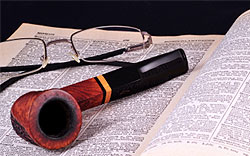 As with most hobbies, we pipe smokers have our own lexicon. Most people believe that our terminology exists to allow us to express complex concepts in shorthand, but the truth is that we use this slang to exclude those who are not among the cognoscenti. For the sake of clarity, however, I’m going to throw out some definitions of terms that one might happen upon in these pages and elsewhere.
As with most hobbies, we pipe smokers have our own lexicon. Most people believe that our terminology exists to allow us to express complex concepts in shorthand, but the truth is that we use this slang to exclude those who are not among the cognoscenti. For the sake of clarity, however, I’m going to throw out some definitions of terms that one might happen upon in these pages and elsewhere.
DGT or Delayed Gratification Technique- To achieve the DGT, pack a pipe, do the charring light and tamp and then set the pipe aside for enjoyment at a later time. I’ve used this method and have gotten a number of excellent smokes as a result. Although the origins of this technique are unclear, I’m willing to bet that it started with a pipester loading up a bowl, lighting it, getting distracted and forgetting what he did with the damned pipe.
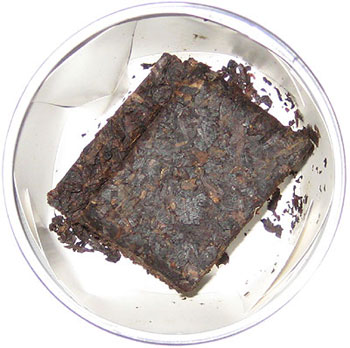 Crumble Cake– 1) A pressed tobacco using cut tobacco rather than raw leaf. It is then sliced so it can be prepared however the smoker prefers- rubbing out, chopping, folding and stuffing, etc. 2) What happens on a pipe smoker’s birthday because there are too many candles on it.
Crumble Cake– 1) A pressed tobacco using cut tobacco rather than raw leaf. It is then sliced so it can be prepared however the smoker prefers- rubbing out, chopping, folding and stuffing, etc. 2) What happens on a pipe smoker’s birthday because there are too many candles on it.
Shank– The part of the stummel (see later) that goes from the bowl to the stem with the drafthole going down the center; or, a part of an animal that the doctor says we should no longer eat; or, what happens every time I take a 5 iron out of my golf bag.
Stummel– The part of the pipe consisting of the bowl and shank, as opposed to those little German figurines that Mom or Grandma used to collect.
Button– The very end of the stem which goes into the smoker’s mouth and is where the drafthole terminates; alt.- The thing that goes flying across the room after sitting on the couch following Thanksgiving dinner.
Calabash– A pipe made by fitting an oversized meerschaum bowl into the wide end of a curved, hollowed and dried gourd, or any pipe with a similar appearance. Also, the pipe that Sherlock Holmes NEVER OWNED…DAMNIT!!! Read all 56 short stories and four novels, and you’ll never see a reference to a calabash. In a future article, I’ll write about the Great Detective and his pipes, but a calabash WON’T BE one of them.
Dublin– A pipe which has a bowl that is wider at the crest than at the bottom; sort of the inverse of a volcano; or, another great city where you can’t light up a pipe in a pub.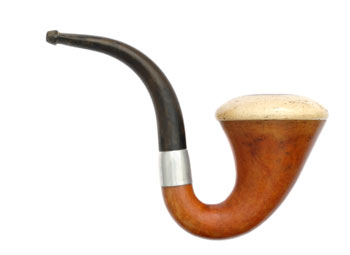
Pipe cleaners– Twisted wires with fuzz trapped between them that are meant to be run down the stem and shank to remove tars and fluids from the inside of the pipe, but usually wind up being twisted into stick men by your children or grandchildren.
Latakia (lat·uh·KEE·uh)- A black tobacco made in Syria from the base tobacco Shek-el-Bint or in Cyprus by using Smyrna by hanging the leaf in barns with open, aromatic fires which blackens the tobacco and gives it a very smoky flavor and aroma. Also another word that Brits can’t pronounce properly.
Pressure– Physical force applied to Perique and cake and flake tobaccos to make them stick together tightly by using a hydraulic press, a screwjack or a column press. Alt.- What Kevin Godbee, publisher of Pipes Magazine.com exerts upon me right before my monthly deadline.
[Editor’s Note: Ironically, Russ is always the first one to turn in his articles.]
Corncob– What’s left after removing the kernels from an ear of corn. A very specific strain of corn is grown for the Missouri Meerschaum Company, and when the corn is shelled the cobs are used to make their world-famous pipes by finishing the exterior with plaster and fitting them with a wooden shank and plastic stem.
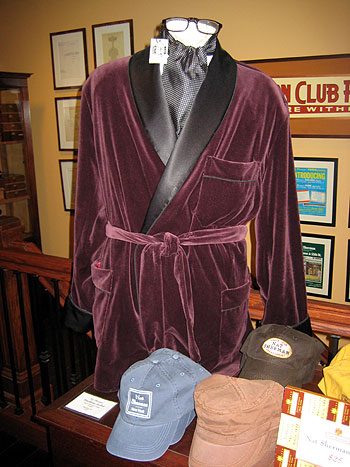 Smoking jacket– A loose fitting jacket (actually more of a cross between a robe and jacket) usually made of satin, velvet and or brocade, meant to protect the pipe smoker’s clothes from flying embers and to keep the clothes beneath it from picking up the smoky aroma; also what one winds up with while smoking a pipe in the car with the window open.
Smoking jacket– A loose fitting jacket (actually more of a cross between a robe and jacket) usually made of satin, velvet and or brocade, meant to protect the pipe smoker’s clothes from flying embers and to keep the clothes beneath it from picking up the smoky aroma; also what one winds up with while smoking a pipe in the car with the window open.
Woodstock– A shape also called a zulu, which has a slight (1/8th) bend and a Dublin-like bowl, with the bowl mildly canted forward. Another definition would be: an iconic American music festival held on a farm in New York State which every living person from the age of 59 to 70 claims to have attended.
Pipe nail– A very useful tool which looks somewhat similar to a nail, with a fairly large, flat head used for tamping lit tobacco, and the other end is usually shaped to allow it to be used as a scraping tool, but you can’t because you keep losing the freaking things.
Match– 1) A tobacco blend created to emulate another existing or extinct mixture. 2) A wooden or cardboard stick which is coated with incendiary chemicals at one end that can be struck to start it burning with the intention of using the flame to light other objects, but absolutely will not work in a wind above 1 mph.
Aging– Leaving tobacco in its tin for an extended period of time, or putting tobacco in a jar or similar container for use at a later time, to allow the flavor to improve; or, the natural process of growing older which makes us think that tobaccos we smoked when we were younger were so much better than what’s available today.
Dunhill– One of the most famous names in the pipe world. The company has made some of the most iconic tobaccos in pipe smoking, as well as some of the most collectible pipes ever, as well as lighters, clothing and men’s accessories. Today, the pipes are made by a company separate from the tobaccos and the lighters are made by … I can’t remember, and now I’m so confused, I need a nap. Go away.
|
Russ Ouellette is the blender/creator of the Hearth & Home series of tobaccos for Habana Premium Cigar Shoppe and www.pipesandcigars.com in Albany, NY. He has been a pipe smoker and blender for over 30 years, and enjoys feedback from the pipe smoking public. You can reach Russ at russo@pipesandcigars.com or by calling 1-800-494-9144 on Monday, Wednesday and Thursday from 9 am to 5 pm and Friday from 1 pm to 5 pm. |




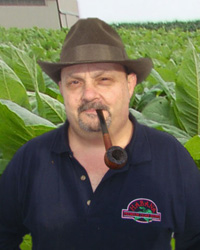



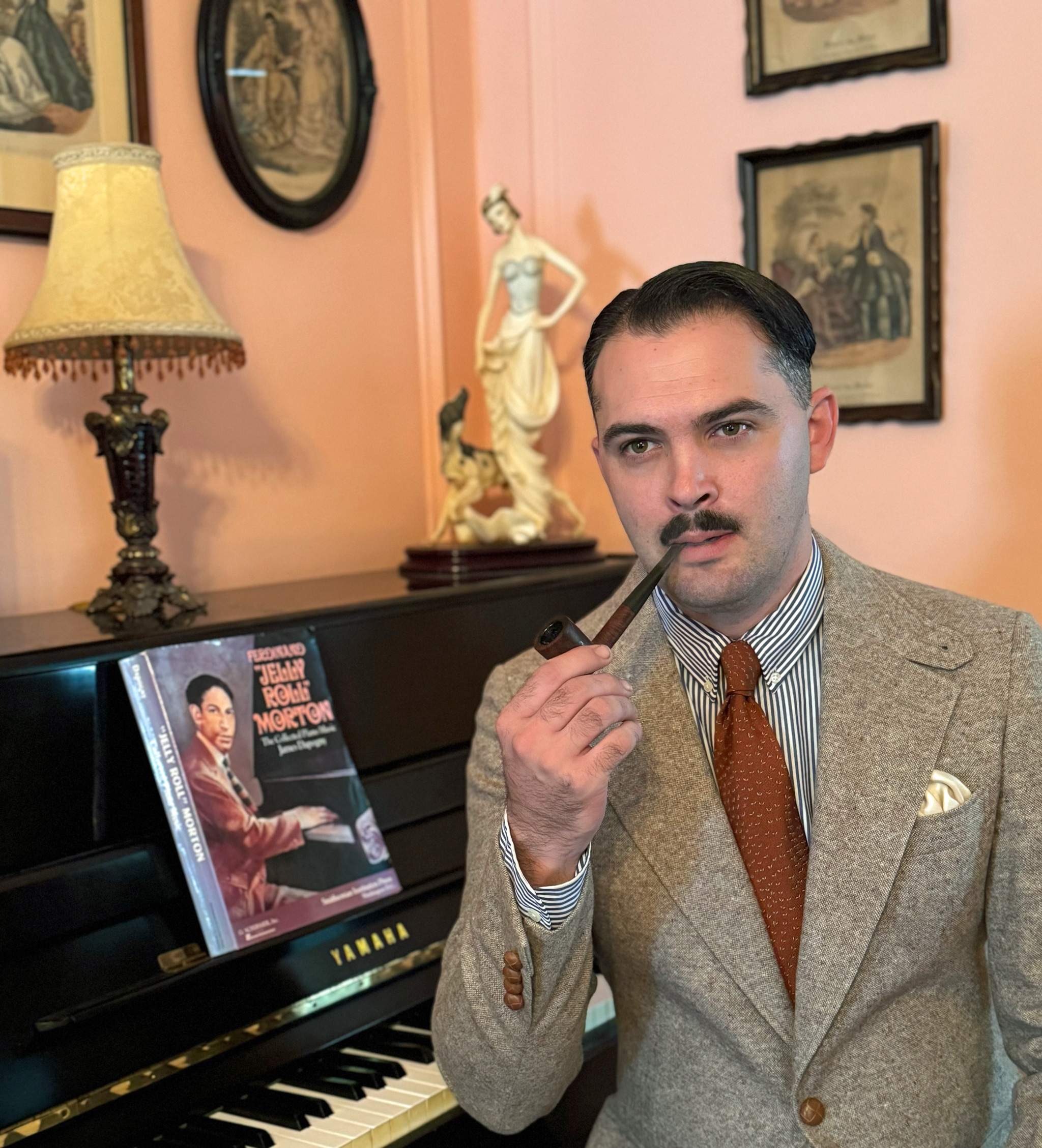
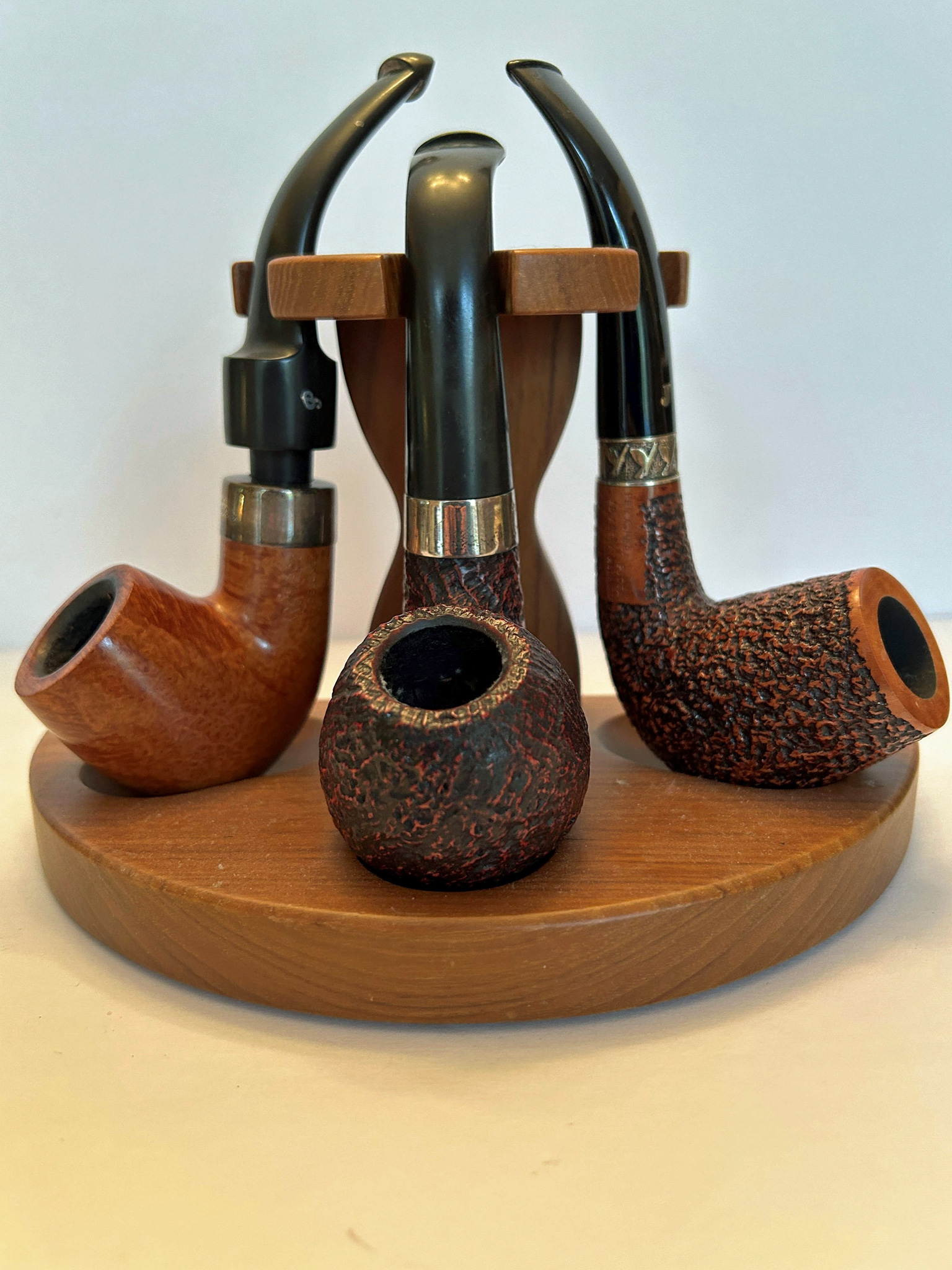
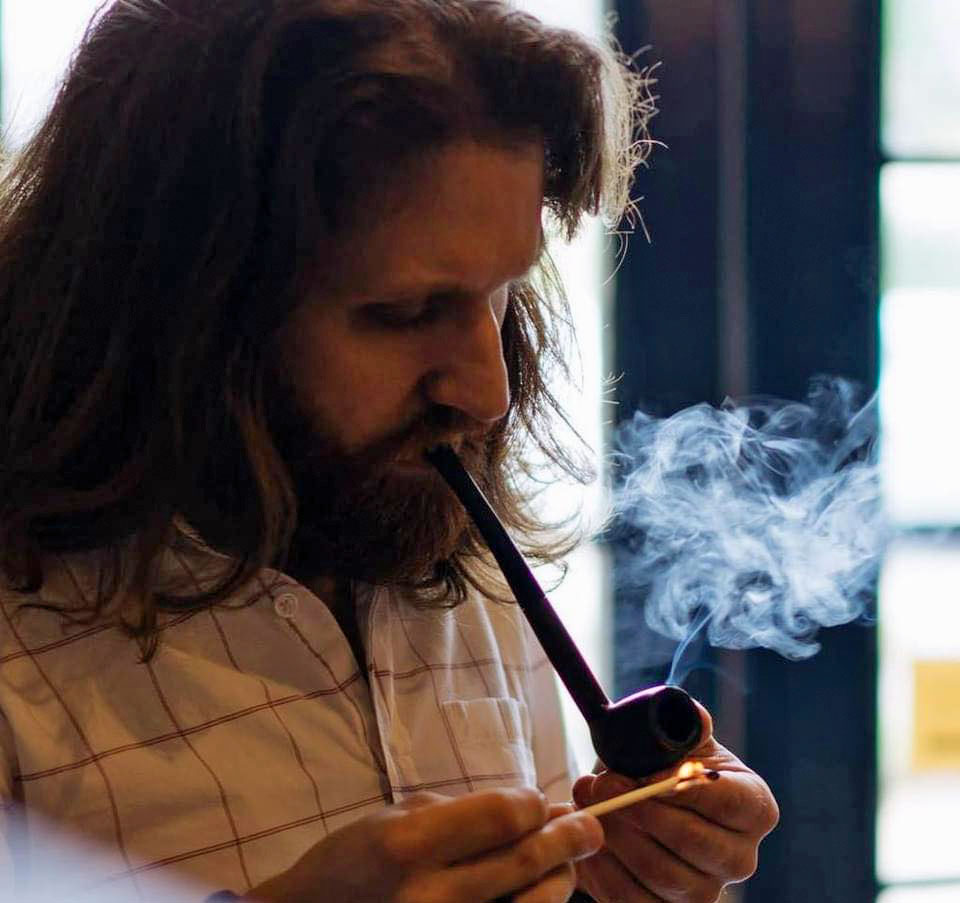
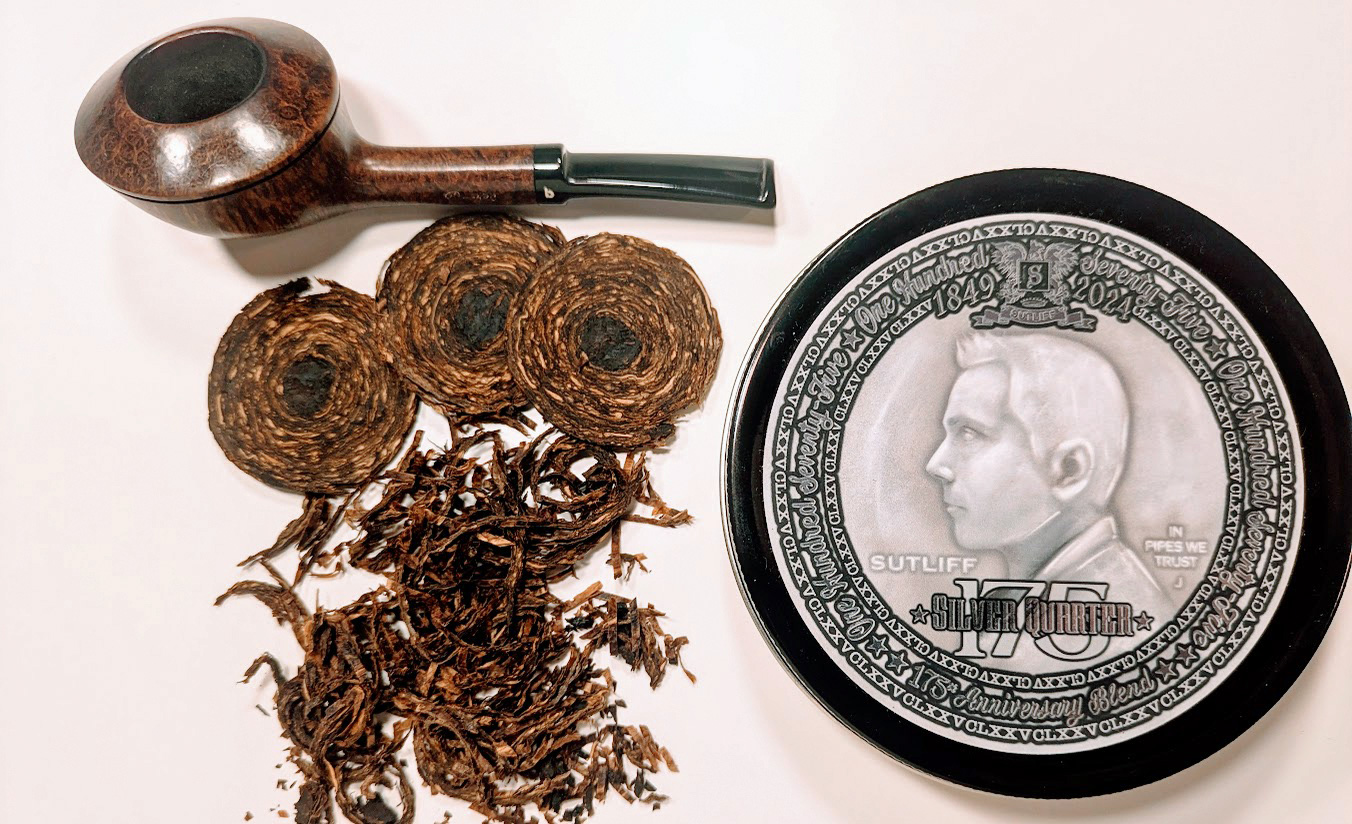






I feel so much more superior than I did 5 minutes ago. Great article, Russ!
Filed under “Dictionary”!
Awesome article. But what is this thing you call a “pipe”?
And pipe smokers stole DGT from the Kama Sutra.
I’m glad Pipe reamer was left out. lol
“I’m willing to bet that it started with a pipester loading up a bowl, lighting it, getting distracted and forgetting what he did with the damned pipe.”
Hey! I resemble that remark… 🙂
Russ, I believe the Calabash v. Sherlock thing is the result of the movie “The Secret Life of Sherlock Holmes”. A spoof and of course instantly into the realm of Urban Legend. Sad….
Great read!
Now if we could just get together on the secret hand shake!!!! Fun article
I’ll address the reason for Holmes’ association with the calabash in my next article (October). It’s a neat little story that makes perfect sense when you read it.
Russ
Great article Russ! Thanks for making me laugh!
Good list of terms to know. I’ll be sure to whip out a few of them to impress people at parties. 🙂 What’s the Brit pronunciation of “latakia”?
Simon
The pipesters across the pond say la-TAC-ee-ah, but the transliteral spelling of the port city in Syria puts an apostrophe before the q in Lata ‘Qiyah, so the American pronunciation would be the more correct one.
Russ
“…so the American pronunciation would be the more correct one.”
That’s a first! It took over 200 years, but by gum, y’all did it! 😀
Actually, I must have been introduced to the word by a Brit, because my first instinct is to say la TAK ee ah, but I know that the other pronunciation is correct and I have been corrected by my tobacconist (Canadian) in the past.
Simon
Great article russ Yet i cannot even pronounce latakia that way! must be my colonial heritage, ar the fact that we kiwis speek funnee
I’ve read that the calabash became associated with Sherlock Holmes because stage actors who played the sleuth found it easier to speak with a bent pipe in their mouth than with a straight pipe, which makes sense to me. But who knows…
I heard the same as Frank… I can’t remember now where I read it though.
Good read, Russ!
A fun read, Russ. It’s good to know we pipesters don’t have to take ourselves too seriously! 🙂
I always wondered how latakia was supposed to be be pronounced. Being from Texas, though, it’s gonna be hard not to call it lAH-TAKE’-ee-ya. Just swat me upside the head if we ever meet and you hear me say that. Also, in re. what cortez said, smack me if you catch me taking myself seriously.
I’m still not sure of the pronunciation of Latakia. Recently, when the city was under attack in Syria, the American news reporters pronounced it la-TAC-ee-ah.
I wouldn’t take as gospel anything said by a reporter.
First, thanks for the article- I enjoyed it. The real reason I’m commenting is to say THANK YOU for pointing out that Sherlock Holmes didn’t use a calabash! I have in fact read all of Holmes stories, and it makes me crazy when people show an image of the guy smoking some great huge twisted calabash… because apparently without caricature no one would know its a pipe! Bravo!
Great read Russ, real fun and of course I was at Woodstock, don’t remember it, too much pipe smoking, but still got the tickets.
Great fun as always. I think that the DGT thing started with someone like me with ADHD. But i have it under con…………………….OH LOOK A CHICKEN!
Loved the article,..plenty of humor. Hope more are forthcoming…See you in Richmond.
Funn
awesome russ, thx
How to pronounce Latakia? I first read the name and then assumed it was la-TA-kee-ah, and was corrected the first time I said it in a tobacco shop. I then learned it was the British habit to say it this way (which is actually more common English language pronunciation, emphasis on the second syllable). I figured Britain actually had lots of experience in that part of the world for quite some time, so maybe they know better.
And now I have pretty definitive proof that it is indeed la-TA-kee-ah, (and not the acquired American convention of LA-ta-KEE-ah). Here is a podcast interview with a native of the Syrian city of Latakia, the real place where the tobacco is actually produced. The man has learned English, but clearly says the name of his own city as la-TA-kee-ah. That’s good enough for me, though I’ll sound like the fussy pronunciation from now on. Oh well. Here’s the podcast audio recording. Jump ball…
http://www.ulivewhere.com/downloads/download-latakia.html
Hey great article! I look forward to your article on Sherlock Holmes’ pipes. He’s by far my favorite literary character.